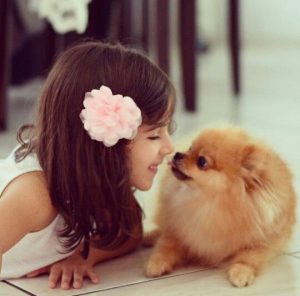Furry Babies’ 5 Fun Facts About Pomeranian Puppies!
5 Fun Facts About Pomeranian Puppies!
The Incredible Shrinking Dog – Pomeranians used to be a lot bigger…like 20 pounds bigger than their current average weight of 7 -10 pounds! Originally, the dogs weighed an average of 30 pounds and were all white, in fact, they used to pull sleds and herd animals.
Fur Balls – Pomeranian puppies are the truest definition of the term fur ball! These powder puffed dogs don’t pull sleds any more, but they’ve managed to maintain their fluffy, thick, double coats. They actually don’t require professional grooming, but absolutely daily maintenance. If their fur isn’t properly handled, it can become knotty and matted.

Ritzy Spitz – Spitz is a type of dog that describes several breeds of dogs that commonly and loosely share the same ancestry and traits. These dogs all have pointy ears and muzzles and very thick and dense fur. Sounds like Pomeranian puppies right? They are the smallest size of spitz dogs. As we previously mentioned, they used to pull sleds, so being a spitz dog, it’s no wonder their ancestors come from Arctic regions. They’re related to Huskies, Akitas, and Malamutes.
Colorful Crew – Most dog breeds come in one or two or maybe three colors, but that certainly doesn’t apply to the Pomeranian puppy. They have the biggest variety of colors overwhelmingly than most breeds. The American Kennel Club has identified 23 colors and combinations. They include black, black and tan, black and brindle, orange sable, blue, chocolate, chocolate and tan, cream, red, red sable, tri-colored, white, blue brindle, and chocolate sable.
Bark is Bigger Than Their Bite – Well, Pomeranian puppies check the box for being one of those dogs that pack a big punch in a small package. They live up to the hype of being little big dogs. They are widely known for possessing the stereotypical yappy dog trait, but this doesn’t necessarily apply to all Poms. Should you decide to own a Pomeranian puppy, you should train them very early on to quash the bark. Socialize them by introducing other dogs and people into their lives.
